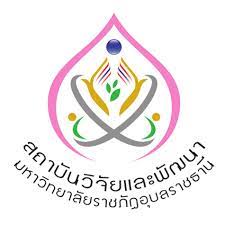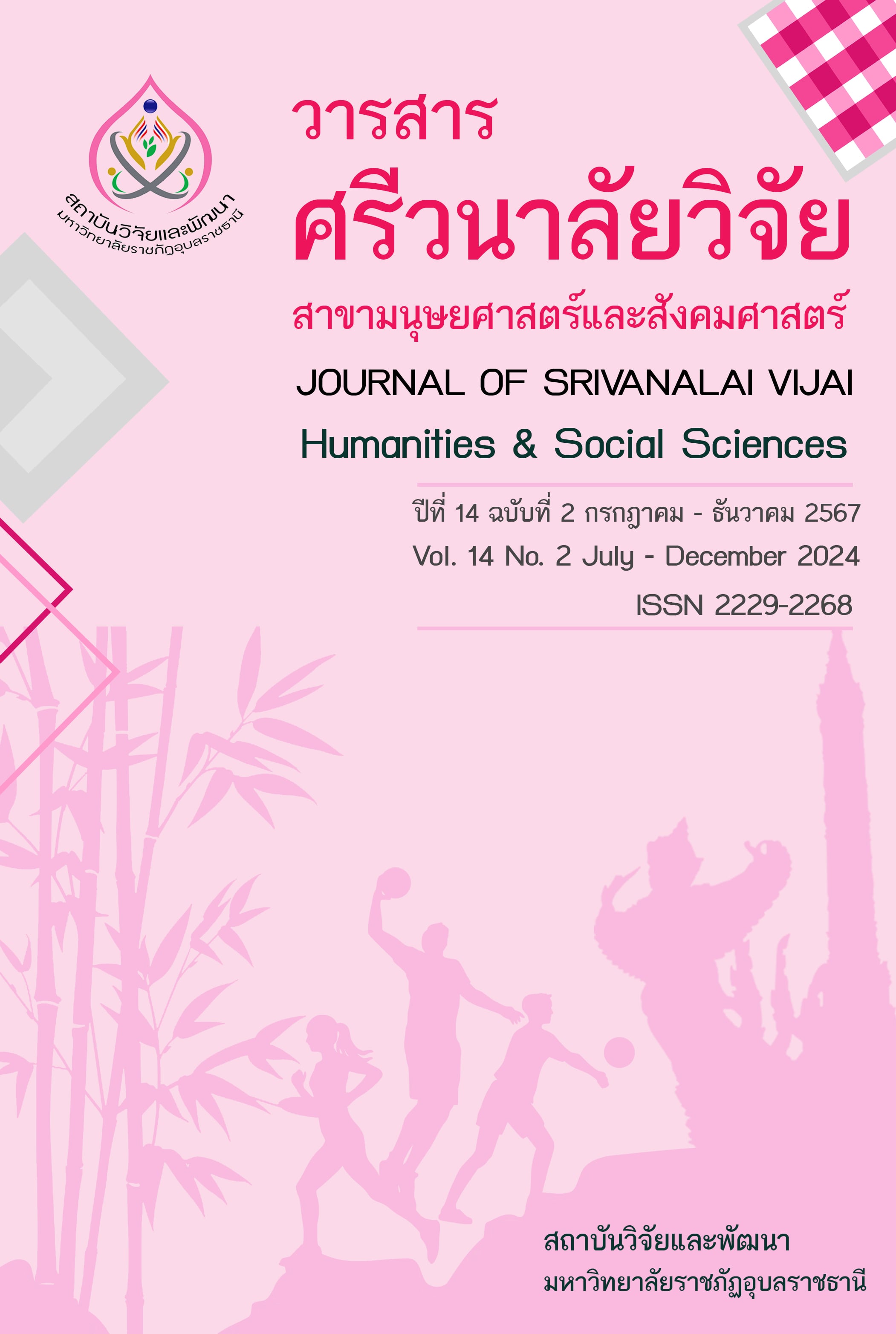รูปแบบการพัฒนาท้องถิ่นอย่างยั่งยืนบนฐานเศรษฐกิจ BCG ภายใต้ความร่วมมือระหว่าง มหาวิทยาลัยราชภัฏอุบลราชธานีกับวิทยาลัยครูปากเซ สาธารณรัฐประชาธิปไตยประชาชนลาว
Main Article Content
บทคัดย่อ
โครงการวิจัยนี้ มีวัตถุประสงค์เพื่อ 1) ค้นหารูปแบบการพัฒนาท้องถิ่นอย่างยั่งยืนบนฐานเศรษฐกิจ BCG 2) ถ่ายทอดเทคโนโลยีการพัฒนาผลิตภัณฑ์ชุมชนบนฐานเศรษฐกิจ BCG ให้กลุ่มวิสาหกิจชุมชนในแขวงจำปาสัก และ 3) ศึกษาแนวทางในการพัฒนาท้องถิ่นอย่างยั่งยืนตามบริบทพื้นที่บนฐานเศรษฐกิจ BCG ภายใต้ความร่วมมือระหว่างมหาวิทยาลัยราชภัฏอุบลราชธานี และวิทยาลัยครูปากเซ พบว่า 1) การพัฒนาท้องถิ่นอย่างยั่งยืน
บนฐานเศรษฐกิจ BCG ใช้รูปแบบการบูรณาการการดำเนินงานอย่างมีส่วนร่วมและทรัพยากรของคณะมนุษยศาสตร์และสังคมศาสตร์ วิทยาลัยครูปากเซ และสหพันธ์แม่หญิงวิทยาลัยครูปากเซ ในการการพัฒนาและยกระดับผลิตภัณฑ์ชุมชนให้แก่กลุ่มวิสาหกิจชุมชนเส้นทางสายไหม และนักศึกษาวิทยาลัยครูปากเซ 2) โครงการวิจัยได้ถ่ายทอดเทคโนโลยีการพัฒนาและยกระดับผลิตภัณฑ์ชุมชนบนฐานเศรษฐกิจ BCG จำนวน 4 ผลิตภัณฑ์ คือ
ชาใบหม่อน ข้าวเกรียบใบหม่อน ข้าวเกรียบดักแด้ และขนมดอกจอกใบหม่อน รวมทั้งให้ความรู้และพัฒนาทักษะด้านการตลาดให้กลุ่มวิสาหกิจชุมชนเส้นทางสายไหม และนักศึกษาวิทยาลัยครูปากเซ และทางกลุ่มได้ทดลองทำการผลิตและออกร้านจำหน่ายสินค้าในงานบุญวิทยาศาสตร์ ประจำปี 2567 วันที่ 12 มกราคม 2567ณ วิทยาลัยครูปากเซ แขวงจำปาสัก สปป. ลาว โดยใช้ต้นทุนการผลิต 172,000 กีบ และได้กำไรจากการจำหน่าย 270,000 กีบ ซึ่งผลจากการประเมินกลุ่มมีความพึงพอใจอยู่ในระดับมาก ค่าเฉลี่ย 4.12 และ 3) แนวทางการพัฒนา พบว่า มหาวิทยาลัยราชภัฏอุบลราชธานีและวิทยาลัยครูปากเซ ควรพัฒนาท้องถิ่นให้สอดคล้องกับบริบทของพื้นที่ โดยการส่งเสริมการเพิ่มมูลค่าผลผลิตทางการเกษตรหรือใช้วัตถุดิบที่มีในท้องถิ่นมาแปรรูปเป็นผลิตภัณฑ์ชุมชนและเสริมสร้างทักษะการตลาด เพื่อสร้างงานสร้างรายได้ พัฒนาความเข้มแข็งของกลุ่ม เพื่อนำไปสู่การพัฒนาที่สมดุลและยั่งยืนต่อไป
Article Details
เอกสารอ้างอิง
เกษม กุณาศรี และคณะ. (2559). การเลือกเอกลักษณ์ท้องถิ่นสำหรับพัฒนาผลิตภัณฑ์ชุมชน กรณีศึกษากลุ่มวิสาหกิจชุมชนบ้านห้วยพู. รายงานการวิจัย. มหาวิทยาลัยราชภัฏเชียงใหม่.
ทัศนา บุญทอง. (2543). ทิศทางการปฏิรูประบบบริการการพยาบาลที่สอดคล้องกับระบบบริการสุขภาพไทยที่พึงประสงค์ในอนาคต. กรุงเทพฯ: ศิริยอดการพิมพ์.
ประเวศ วะสี. (2545). การพัฒนามนุษย์แนวใหม่เพื่ออนาคตที่ยั่งยืน. กรุงเทพมหานคร: หมอชาวบ้าน.
ภูมิศรัณย์ ทองเลี่ยมนาค. (2564). จุดเปลี่ยนครั้งสำคัญของการศึกษาโลก. ค้นหาเมื่อ 22 กันยายน 2567,
จาก https://www.eef.or.th/article1-02-01-211/
สุนทรารักษ์ สุทธิจันทร์ และเมธา สุธีรโรจน์. (2555). ปัจจัยที่มีผลกระทบต่อความได้เปรียบทางการแข่งขันของอุตสาหกรรมส่งออกอัญมณี และเครื่องประดับในประเทศไทย. วารสารมหาวิทยาลัยนครพนม. 22), 39-45.
สุวิดา ตัณฑประศาสน์. (2559). รูปแบบการพัฒนาชุมชนโดยการมีส่วนร่วมของชนเผ่าลื้อ บ้านน้ำเงิน เมืองเวียงภูคา แขวงหลวงน้ำทา สาธารณรัฐประชาธิปไตยประชาชนลาว (สปป.ลาว). วิทยานิพนธ์ปริญญาปรัชญาดุษฎีบัณฑิต สาขาวิชา ยุทธศาสตร์การพัฒนาภูมิภาค. มหาสารคาม: บัณฑิตวิทยาลัย มหาวิทยาลัยราชภัฏมหาสารคาม.


